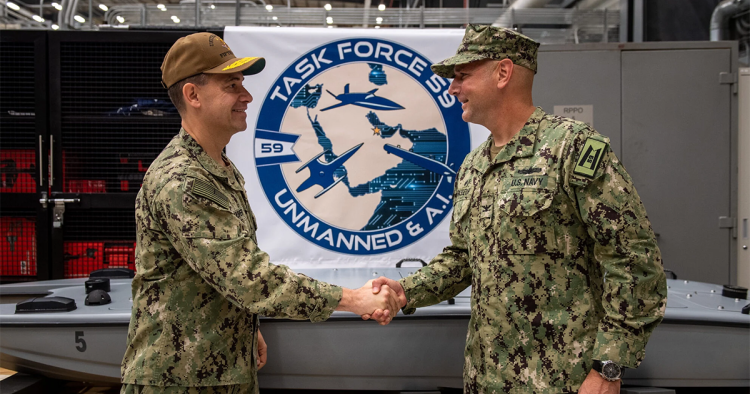US Naval Forces Central Command’s investment in Task Force 59, a home for unmanned and artificial intelligence experiments in the Central Command region, could pay dividends for both the US and its partners. But, say Jasmin Alsaied and Bilal Saab of the Middle East Institute, more work is needed for it to reach its full potential.
Nothing breeds creativity more than scarcity. To compensate for its reduced military posture in the Middle East, the United States has emphasized innovative approaches to security cooperation with regional partners, and the returns have been significant.
The most obvious and impressive of these returns is Task Force (TF) 59, US Naval Forces Central Command (NAVCENT)’s latest creation. An incubator that seeks to propel artificial intelligence and unmanned systems into the region, TF 59 leads the way in carrying out exercises and developing practices that support partner nations in their attempts to build capabilities with new technologies. By late 2023, TF 59 plans to put over 100 unmanned vessels in regional waters.
TF 59 has a scheme of maneuver that enables joint integration, interoperability, and international involvement by alleviating many of the pitfalls that stop nations from participating in joint exercises. Juniper Oak, the recent US-Israel combined exercise that showcased joint all-domain command and control (a key strategic imperative of the Department of Defense), could serve as a template for future engagement in the region — though it all depends on how the capabilities of other regional partners evolve.
Continue reading on Breaking Defense
U.S. Navy photo/Dawson Roth
The Middle East Institute (MEI) is an independent, non-partisan, non-for-profit, educational organization. It does not engage in advocacy and its scholars’ opinions are their own. MEI welcomes financial donations, but retains sole editorial control over its work and its publications reflect only the authors’ views. For a listing of MEI donors, please click here.













